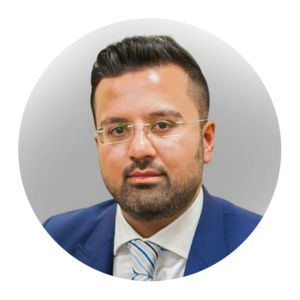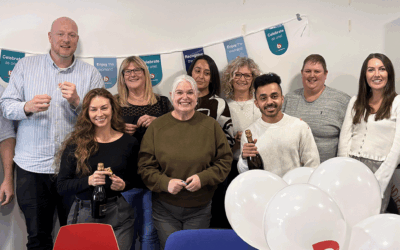By Clare Leek on February 8, 2023

Yousaf has extensive experience within secondary care, having worked primarily in large acute health boards in Scotland and the Middle East. He has represented pharmacy nationally through committee memberships with UKCPA and the RPS.
Watch the video and listen to his take on how:
- ICS’s will realign the networks of the profession at a system level to refocus on a more collaborative offering.
- Opportunities for collaboration between community and general practice pharmacists need to happen
- All sectors of pharmacy should be involved in decision-making and the resources to enable implementation
Selma Abed, Head of Medicines Optimisation here at Spirit Health, shares her thoughts in the video and below on some of the key points raised by Yousaf.

Time to collaborate
Across the board, we’ve heard a lot of talk about collaboration over competition, which was touched upon again in this episode. We asked Selma: What needs to happen to ensure collaboration is successful in the long term?
“It all comes down to multiple stakeholders actively and routinely talking to each other.
Within our recent roundtable in October, many topics revolved around communication issues between primary, secondary and community care. Our collective response was that pharmacists need to be involved in decision-making as they are directly involved in patient care. Fundamentally, this comes down to stakeholder engagement and communication.”
“The first step on every project we do is to map out all the stakeholders and then ask a set of questions: Who are the stakeholders in secondary care down to community level? How do we need to communicate? Are stakeholders happy with the plans? Have they had a chance to review and input?
Our collective priority is the patient. We’ve achieved system alignment when the patient is consistently happy with the outcome. For this to happen, a communication piece needs to be in place between stakeholder management and engagement – this is key.
This alignment ensures longevity and sustainability in projects. With it, we will reap the long-term benefits, even more so in the ICS environment.”
Let’s flex
In the episode, Yousaf mentions that ‘local flexibility is needed to meet the specific needs of local populations’ to ‘achieve change at scale’. We asked Selma: How can local flexibility be employed within an ICS?
“Even though ICSs are bigger structures, in theory, we still have the same teams of nurses, pharmacists and technicians at ground level. To benefit from local flexibility, we need to utilise their diverse knowledge, skills and specialities so that further down the line, patients benefit from an aligned workforce.”
“We recognise that there are national capacity issues, so it is challenging to apply skillsets.
However, hybrid roles have eased the strain and can go a long way in solving some capacity challenges within secondary care. The ‘hybrid role’ offers pharmacists flexibility and presents that flexibility and varied skill set back to stakeholders to better manage workflows down to the patient level.”
Reflect, learn and improve
Yousaf touched upon the ‘evident challenges in relation to data sharing and the use of technology’. He focused on how ‘ICSs must support IT deployment and system-level governance and oversight’.
It’s a challenge echoed across the UK, not just within NHS England, So we asked Selma: When it comes to data sharing and the use of technology, what can teams achieve?
‘At present, all teams measure the impact of medicines programmes/initiatives at base level or through data portals.
“The key here is to identify where you sit at base level, whether through disease management or prescribing. Then, after 6-12 months of implementation, teams need to go back to the base level and measure the impact; Has there been a reduction in hospital admissions? Has there been a reduction in spend?
Importantly, we shouldn’t just focus on spend or data points individually but look at the whole holistic picture.”
“The opportunity for ICSs when it comes to data is the merging of multiple teams. They can see where they sat at Place level and now where they sit as an ICS. Data should highlight where there have been successes and where there can be improvements. Within ICSs, teams benefit and share from good practice and experience to make more significant impacts.”
Key takeaway
After watching Yousaf’s episode, we asked Selma: What can teams achieve now that they’re in an ICS structure?
“Coming out of the pandemic, there is a strong opportunity to look at long-term condition management and medicines optimisation.
Within an ICS structure, there is bigger outreach, so fundamentally, our enhanced communication and collaboration can make a bigger positive impact on our patients to give them healthier lives.”
The next steps
We want to know what you think and what you’ve got to say. Please comment below to share your experiences and thoughts on the episode.
If you’d like to discuss the topic in more detail or have much more to add, reach out to Selma Abed on Twitter or by email.
Have you missed an episode? Click on the links below to catch up:
- Episode 1: Opportunities within Integrated Care Systems with Yousaf Ahmad
- Episode 2: Stepping up Medicines Optimisation with Liz Butterfield
- Episode 3: A well and sustainable workforce with Ashok Soni


